Shadi Atalla
Enhanced Hybrid Deep Learning Approach for Botnet Attacks Detection in IoT Environment
Feb 10, 2025Abstract:Cyberattacks in an Internet of Things (IoT) environment can have significant impacts because of the interconnected nature of devices and systems. An attacker uses a network of compromised IoT devices in a botnet attack to carry out various harmful activities. Detecting botnet attacks poses several challenges because of the intricate and evolving nature of these threats. Botnet attacks erode trust in IoT devices and systems, undermining confidence in their security, reliability, and integrity. Deep learning techniques have significantly enhanced the detection of botnet attacks due to their ability to analyze and learn from complex patterns in data. This research proposed the stacking of Deep convolutional neural networks, Bi-Directional Long Short-Term Memory (Bi-LSTM), Bi-Directional Gated Recurrent Unit (Bi-GRU), and Recurrent Neural Networks (RNN) for botnet attacks detection. The UNSW-NB15 dataset is utilized for botnet attacks detection. According to experimental results, the proposed model accurately provides for the intricate patterns and features of botnet attacks, with a testing accuracy of 99.76%. The proposed model also identifies botnets with a high ROC-AUC curve value of 99.18%. A performance comparison of the proposed method with existing state-of-the-art models confirms its higher performance. The outcomes of this research could strengthen cyber security procedures and safeguard against new attacks.
Applications of Knowledge Distillation in Remote Sensing: A Survey
Sep 18, 2024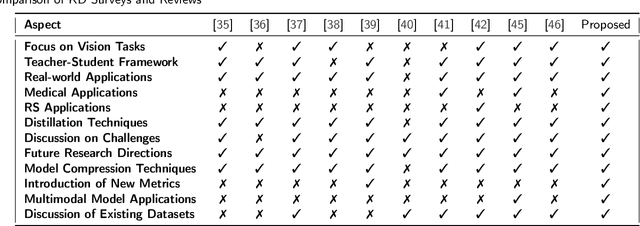
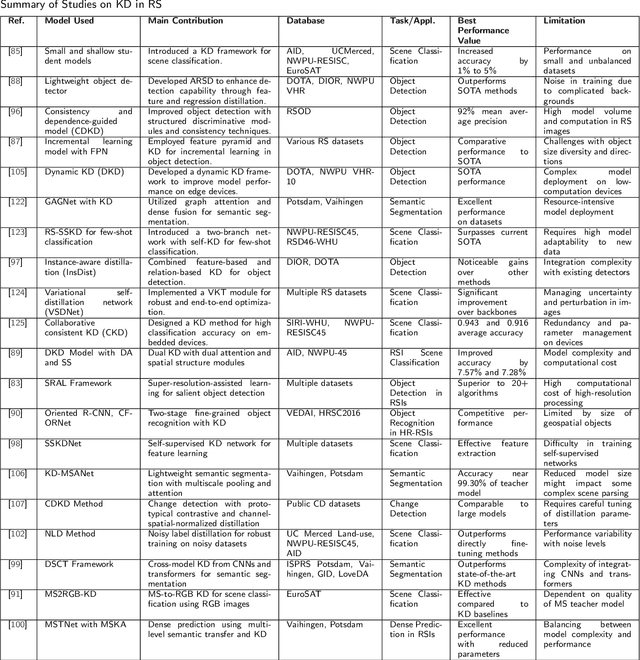
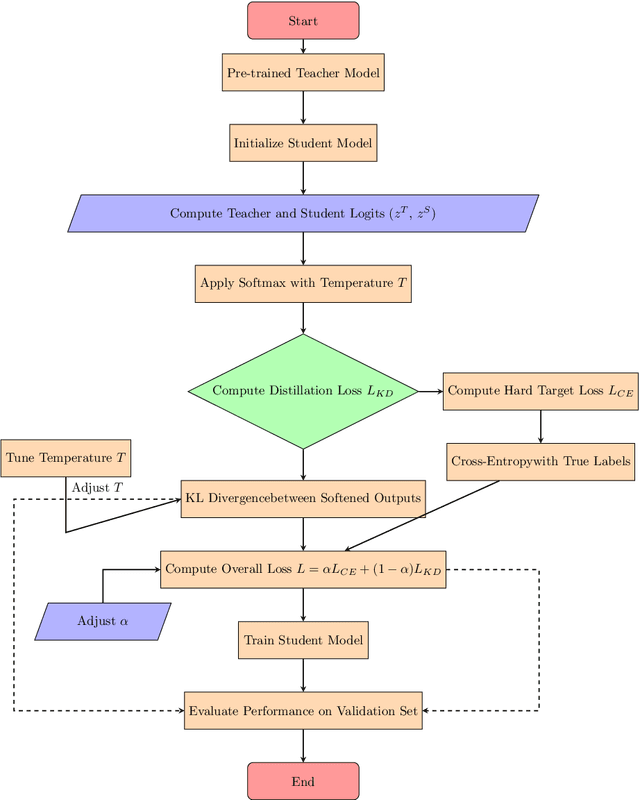
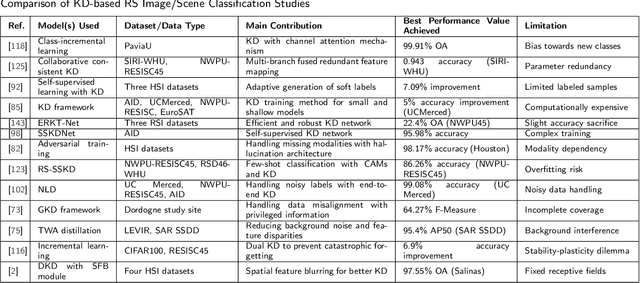
Abstract:With the ever-growing complexity of models in the field of remote sensing (RS), there is an increasing demand for solutions that balance model accuracy with computational efficiency. Knowledge distillation (KD) has emerged as a powerful tool to meet this need, enabling the transfer of knowledge from large, complex models to smaller, more efficient ones without significant loss in performance. This review article provides an extensive examination of KD and its innovative applications in RS. KD, a technique developed to transfer knowledge from a complex, often cumbersome model (teacher) to a more compact and efficient model (student), has seen significant evolution and application across various domains. Initially, we introduce the fundamental concepts and historical progression of KD methods. The advantages of employing KD are highlighted, particularly in terms of model compression, enhanced computational efficiency, and improved performance, which are pivotal for practical deployments in RS scenarios. The article provides a comprehensive taxonomy of KD techniques, where each category is critically analyzed to demonstrate the breadth and depth of the alternative options, and illustrates specific case studies that showcase the practical implementation of KD methods in RS tasks, such as instance segmentation and object detection. Further, the review discusses the challenges and limitations of KD in RS, including practical constraints and prospective future directions, providing a comprehensive overview for researchers and practitioners in the field of RS. Through this organization, the paper not only elucidates the current state of research in KD but also sets the stage for future research opportunities, thereby contributing significantly to both academic research and real-world applications.
Deep Transfer Learning for Kidney Cancer Diagnosis
Aug 08, 2024Abstract:Many incurable diseases prevalent across global societies stem from various influences, including lifestyle choices, economic conditions, social factors, and genetics. Research predominantly focuses on these diseases due to their widespread nature, aiming to decrease mortality, enhance treatment options, and improve healthcare standards. Among these, kidney disease stands out as a particularly severe condition affecting men and women worldwide. Nonetheless, there is a pressing need for continued research into innovative, early diagnostic methods to develop more effective treatments for such diseases. Recently, automatic diagnosis of Kidney Cancer has become an important challenge especially when using deep learning (DL) due to the importance of training medical datasets, which in most cases are difficult and expensive to obtain. Furthermore, in most cases, algorithms require data from the same domain and a powerful computer with efficient storage capacity. To overcome this issue, a new type of learning known as transfer learning (TL) has been proposed that can produce impressive results based on other different pre-trained data. This paper presents, to the best of the authors' knowledge, the first comprehensive survey of DL-based TL frameworks for kidney cancer diagnosis. This is a strong contribution to help researchers understand the current challenges and perspectives of this topic. Hence, the main limitations and advantages of each framework are identified and detailed critical analyses are provided. Looking ahead, the article identifies promising directions for future research. Moving on, the discussion is concluded by reflecting on the pivotal role of TL in the development of precision medicine and its effects on clinical practice and research in oncology.
Advancing 3D Point Cloud Understanding through Deep Transfer Learning: A Comprehensive Survey
Jul 25, 2024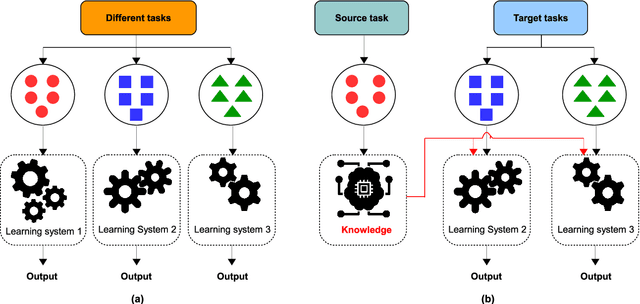
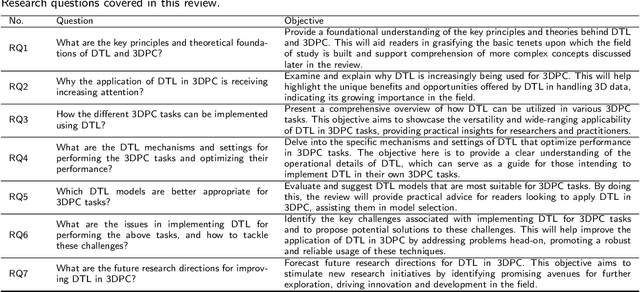
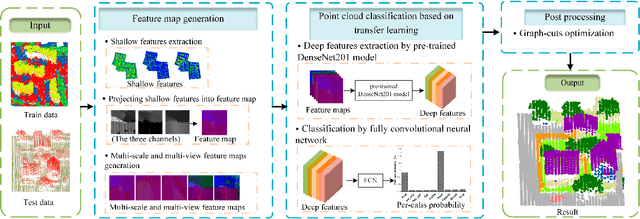
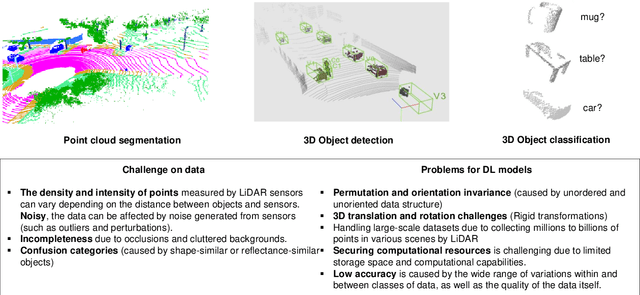
Abstract:The 3D point cloud (3DPC) has significantly evolved and benefited from the advance of deep learning (DL). However, the latter faces various issues, including the lack of data or annotated data, the existence of a significant gap between training data and test data, and the requirement for high computational resources. To that end, deep transfer learning (DTL), which decreases dependency and costs by utilizing knowledge gained from a source data/task in training a target data/task, has been widely investigated. Numerous DTL frameworks have been suggested for aligning point clouds obtained from several scans of the same scene. Additionally, DA, which is a subset of DTL, has been modified to enhance the point cloud data's quality by dealing with noise and missing points. Ultimately, fine-tuning and DA approaches have demonstrated their effectiveness in addressing the distinct difficulties inherent in point cloud data. This paper presents the first review shedding light on this aspect. it provides a comprehensive overview of the latest techniques for understanding 3DPC using DTL and domain adaptation (DA). Accordingly, DTL's background is first presented along with the datasets and evaluation metrics. A well-defined taxonomy is introduced, and detailed comparisons are presented, considering different aspects such as different knowledge transfer strategies, and performance. The paper covers various applications, such as 3DPC object detection, semantic labeling, segmentation, classification, registration, downsampling/upsampling, and denoising. Furthermore, the article discusses the advantages and limitations of the presented frameworks, identifies open challenges, and suggests potential research directions.
Enhancing Plant Disease Detection: A Novel CNN-Based Approach with Tensor Subspace Learning and HOWSVD-MD
May 30, 2024


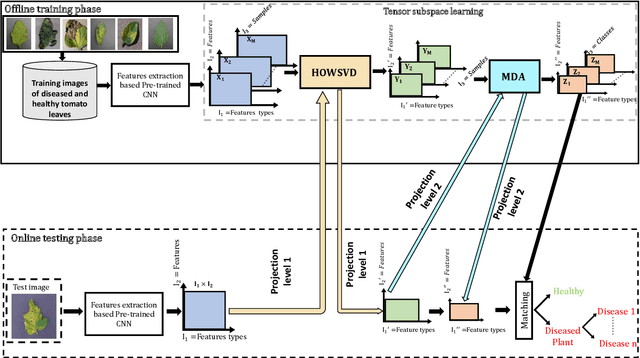
Abstract:Machine learning has revolutionized the field of agricultural science, particularly in the early detection and management of plant diseases, which are crucial for maintaining crop health and productivity. Leveraging advanced algorithms and imaging technologies, researchers are now able to identify and classify plant diseases with unprecedented accuracy and speed. Effective management of tomato diseases is crucial for enhancing agricultural productivity. The development and application of tomato disease classification methods are central to this objective. This paper introduces a cutting-edge technique for the detection and classification of tomato leaf diseases, utilizing insights from the latest pre-trained Convolutional Neural Network (CNN) models. We propose a sophisticated approach within the domain of tensor subspace learning, known as Higher-Order Whitened Singular Value Decomposition (HOWSVD), designed to boost the discriminatory power of the system. Our approach to Tensor Subspace Learning is methodically executed in two phases, beginning with HOWSVD and culminating in Multilinear Discriminant Analysis (MDA). The efficacy of this innovative method was rigorously tested through comprehensive experiments on two distinct datasets, namely PlantVillage and the Taiwan dataset. The findings reveal that HOWSVD-MDA outperforms existing methods, underscoring its capability to markedly enhance the precision and dependability of diagnosing tomato leaf diseases. For instance, up to 98.36\% and 89.39\% accuracy scores have been achieved under PlantVillage and the Taiwan datasets, respectively.
Machine Learning and Vision Transformers for Thyroid Carcinoma Diagnosis: A review
Mar 17, 2024Abstract:The growing interest in developing smart diagnostic systems to help medical experts process extensive data for treating incurable diseases has been notable. In particular, the challenge of identifying thyroid cancer (TC) has seen progress with the use of machine learning (ML) and big data analysis, incorporating transformers to evaluate TC prognosis and determine the risk of malignancy in individuals. This review article presents a summary of various studies on AIbased approaches, especially those employing transformers, for diagnosing TC. It introduces a new categorization system for these methods based on artifcial intelligence (AI) algorithms, the goals of the framework, and the computing environments used. Additionally, it scrutinizes and contrasts the available TC datasets by their features. The paper highlights the importance of AI instruments in aiding the diagnosis and treatment of TC through supervised, unsupervised, or mixed approaches, with a special focus on the ongoing importance of transformers in medical diagnostics and disease management. It further discusses the progress made and the continuing obstacles in this area. Lastly, it explores future directions and focuses within this research feld.
Enhancing Kinship Verification through Multiscale Retinex and Combined Deep-Shallow features
Dec 06, 2023Abstract:The challenge of kinship verification from facial images represents a cutting-edge and formidable frontier in the realms of pattern recognition and computer vision. This area of study holds a myriad of potential applications, spanning from image annotation and forensic analysis to social media research. Our research stands out by integrating a preprocessing method named Multiscale Retinex (MSR), which elevates image quality and amplifies contrast, ultimately bolstering the end results. Strategically, our methodology capitalizes on the harmonious blend of deep and shallow texture descriptors, merging them proficiently at the score level through the Logistic Regression (LR) method. To elucidate, we employ the Local Phase Quantization (LPQ) descriptor to extract shallow texture characteristics. For deep feature extraction, we turn to the prowess of the VGG16 model, which is pre-trained on a convolutional neural network (CNN). The robustness and efficacy of our method have been put to the test through meticulous experiments on three rigorous kinship datasets, namely: Cornell Kin Face, UB Kin Face, and TS Kin Face.
AI in Thyroid Cancer Diagnosis: Techniques, Trends, and Future Directions
Aug 25, 2023Abstract:There has been a growing interest in creating intelligent diagnostic systems to assist medical professionals in analyzing and processing big data for the treatment of incurable diseases. One of the key challenges in this field is detecting thyroid cancer, where advancements have been made using machine learning (ML) and big data analytics to evaluate thyroid cancer prognosis and determine a patient's risk of malignancy. This review paper summarizes a large collection of articles related to artificial intelligence (AI)-based techniques used in the diagnosis of thyroid cancer. Accordingly, a new classification was introduced to classify these techniques based on the AI algorithms used, the purpose of the framework, and the computing platforms used. Additionally, this study compares existing thyroid cancer datasets based on their features. The focus of this study is on how AI-based tools can support the diagnosis and treatment of thyroid cancer, through supervised, unsupervised, or hybrid techniques. It also highlights the progress made and the unresolved challenges in this field. Finally, the future trends and areas of focus in this field are discussed.
Federated Learning for Computer Vision
Aug 24, 2023Abstract:Computer Vision (CV) is playing a significant role in transforming society by utilizing machine learning (ML) tools for a wide range of tasks. However, the need for large-scale datasets to train ML models creates challenges for centralized ML algorithms. The massive computation loads required for processing and the potential privacy risks associated with storing and processing data on central cloud servers put these algorithms under severe strain. To address these issues, federated learning (FL) has emerged as a promising solution, allowing privacy preservation by training models locally and exchanging them to improve overall performance. Additionally, the computational load is distributed across multiple clients, reducing the burden on central servers. This paper presents, to the best of the authors' knowledge, the first review discussing recent advancements of FL in CV applications, comparing them to conventional centralized training paradigms. It provides an overview of current FL applications in various CV tasks, emphasizing the advantages of FL and the challenges of implementing it in CV. To facilitate this, the paper proposes a taxonomy of FL techniques in CV, outlining their applications and security threats. It also discusses privacy concerns related to implementing blockchain in FL schemes for CV tasks and summarizes existing privacy preservation methods. Moving on, the paper identifies open research challenges and potential future research directions to further exploit the potential of FL and blockchain in CV applications.
Decoding ChatGPT: A Taxonomy of Existing Research, Current Challenges, and Possible Future Directions
Jul 26, 2023Abstract:Chat Generative Pre-trained Transformer (ChatGPT) has gained significant interest and attention since its launch in November 2022. It has shown impressive performance in various domains, including passing exams and creative writing. However, challenges and concerns related to biases and trust persist. In this work, we present a comprehensive review of over 100 Scopus-indexed publications on ChatGPT, aiming to provide a taxonomy of ChatGPT research and explore its applications. We critically analyze the existing literature, identifying common approaches employed in the studies. Additionally, we investigate diverse application areas where ChatGPT has found utility, such as healthcare, marketing and financial services, software engineering, academic and scientific writing, research and education, environmental science, and natural language processing. Through examining these applications, we gain valuable insights into the potential of ChatGPT in addressing real-world challenges. We also discuss crucial issues related to ChatGPT, including biases and trustworthiness, emphasizing the need for further research and development in these areas. Furthermore, we identify potential future directions for ChatGPT research, proposing solutions to current challenges and speculating on expected advancements. By fully leveraging the capabilities of ChatGPT, we can unlock its potential across various domains, leading to advancements in conversational AI and transformative impacts in society.
 Add to Chrome
Add to Chrome Add to Firefox
Add to Firefox Add to Edge
Add to Edge